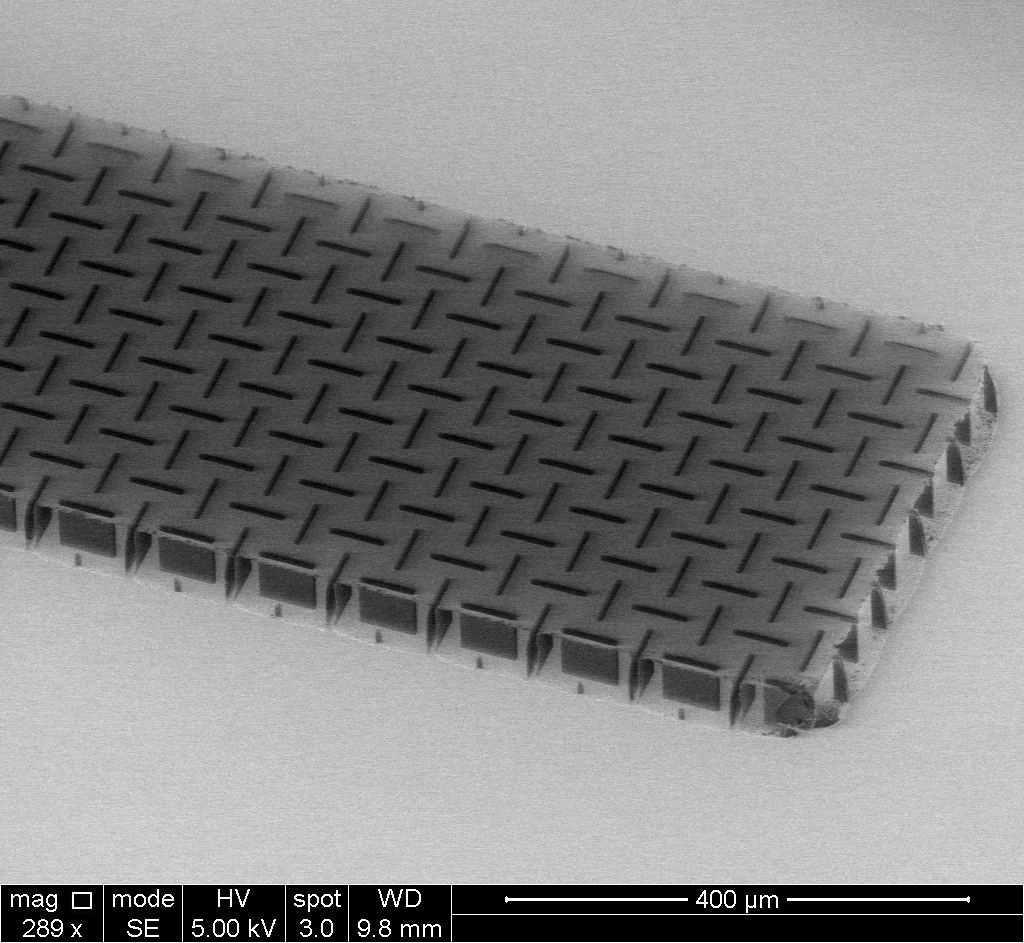What would be the best method for exploring planetary atmospheres, such as at Mars, Venus or even Earth? One group of researchers are developing tiny, levitating “nanocardboard” aircraft that could hover in alien skies. They would fly like dust floating in beams of sunlight – but intelligently, and with a purpose.
“It’s exciting because it’s essentially a new mechanism of flight,” said Igor Bargatin from the University of Pennsylvania. “We’re talking about a structure half an inch in size that can fly around without any moving parts.”
For several years, Bargatin has been leading teams of student engineers in developing the concept of nanocardboard. This is a material that’s as thin as a few strands of DNA and weighs less than a thousandth of a gram, but stiff enough to resist flopping.
Nanocardboard is made out of an aluminum oxide film with a thickness of tens of nanometers. To build it, the researchers created a sandwich structure, similar to corrugated cardboard, forming a hollow plate with a height of tens of microns.
Since the material is ultra-light, an incredibly small amount of energy—just a beam of light—can make it rise. As one side of the plate heats up, the temperature differential pushes circulating air through the plate’s hollow structure, propelling it off the ground.
Bargatin said he was inspired by a Crookes radiometer, a simple instrument that’s been around for more than a century. Also known as a light mill, the instrument is essentially a glass bulb under partial vacuum with paper vanes that are black on one side and white on the other.
When the radiometer is exposed to sunlight, the black sides of the vanes absorb some of the energy and heat up.  A visualization of the “nanocardboard” flyers. Credit: Bargatin Group, Penn Engineering)
A visualization of the “nanocardboard” flyers. Credit: Bargatin Group, Penn Engineering)
“What’s happening then is the air molecules hit the black side, absorb some of the heat, and then leave with a higher speed than it came in with,” Bargatin explained in an article from the University of Pennsylvania. “In physics, we know that whenever you have a change of momentum, or speed, there must be a recoil, there must be a reaction force. The recoil pushes harder on the hotter black sides than the cooler white sides of the vanes and can make the Crookes radiometer rotate pretty quickly if you put it out in direct sunlight.”
But, until now, no one had figured out how to use these forces to overcome gravity and make the vanes levitate. Enter nanocardboard. Because it is so light, thermal forces that are too small to lift paper can actually lift the nanocardboard pieces into the air.
Bargatin and his team published a paper in the journal Nature on nanocardboard in 2018, and have been refining their techniques ever since, as well as figuring out applications for it.  Nanocardboard is a hollow, plate-shaped shell of aluminum oxide, patterned with slit-shaped channels. These channels function like the corrugated paper inside everyday cardboard, and give the nanostructure unprecedented stiffness and robustness. Credit: University of Pennsylvania/Bargatin Group.
Nanocardboard is a hollow, plate-shaped shell of aluminum oxide, patterned with slit-shaped channels. These channels function like the corrugated paper inside everyday cardboard, and give the nanostructure unprecedented stiffness and robustness. Credit: University of Pennsylvania/Bargatin Group.
“The most exciting thing is thinking about how far we can push it in terms of payloads and dreaming about what else we could do,” Bargatin said in a press release. Using light, whether it’s sunlight or a laser beam, to power a flying device opens the door to a huge range of potential uses.
Originally, they imagined a search and rescue operation using “microflyers” that could dart in and out of tiny holes in the rubble, to help find trapped people without putting first responders at risk. Or a tiny robot with a camera that could inspect a jet engine for wear and other problems without taking the engine apart.
But a new study published earlier this year in the journal Advanced Materials takes the nanocardboard to other worlds, showing that the flyers could actually carry payloads ten times their weight in an environment similar to Mars, which has a relatively thin atmosphere and weaker gravity. The tiny aircraft, which need no rotors or propellers, could be a tag-along mission to a future rover, much like the Mars Helicopter is part of the Perseverance rover mission.
“The Mars Helicopter is very exciting, but it’s still a single, complicated machine,” Bargatin said. “If anything goes wrong, your experiment is over, since there’s no way of fixing it. We’re proposing an entirely different approach that doesn’t put all of your eggs in one basket. In addition to carrying sensors, our flyers could simply land and have grains of dust or sand passively stick to them, then transport them back to the rover so it doesn’t need to travel as far.”
Free floating 100 nm plate in Bargatin’s lab.The researchers continue to refine their building techniques and continue to test the material in low-pressure test chambers to study nanocardboard’s ability to levitate when bright light is shone on it, testing how it reacts to both sunlight and focused lasers.
“The coolest part of it is to be doing something nobody else is doing,” Cortes says. “To create something this new that could actually move us forward, technologically, is really interesting.”
